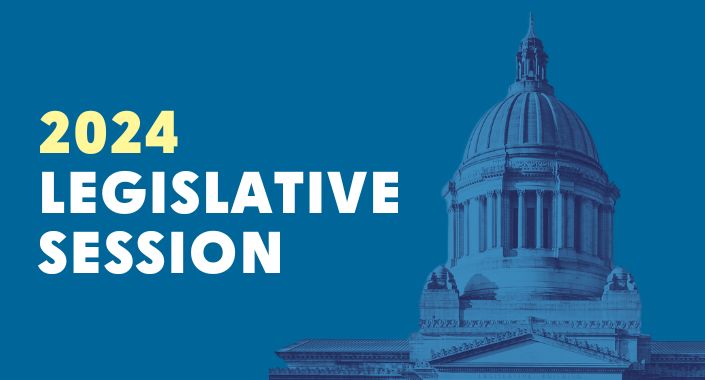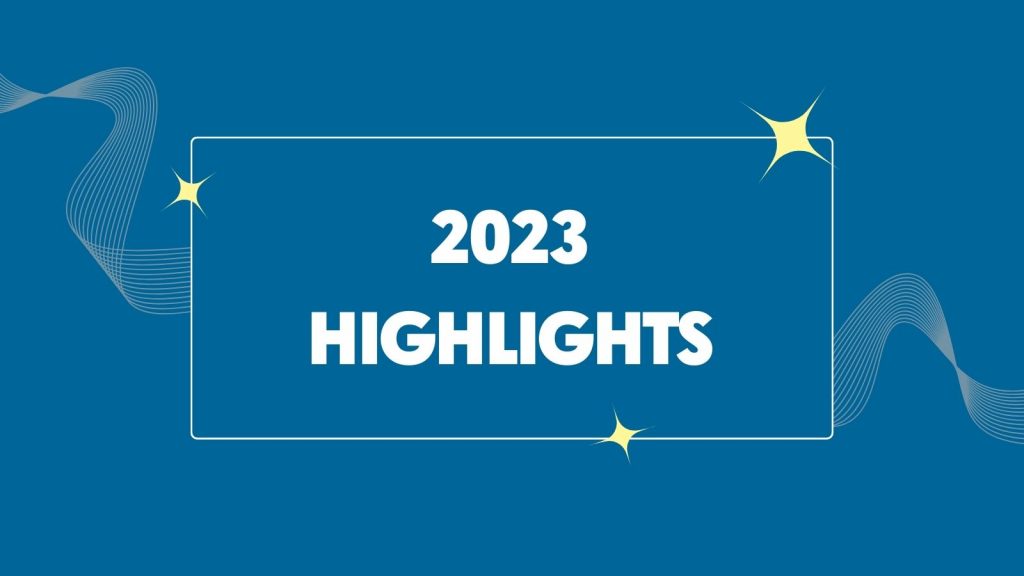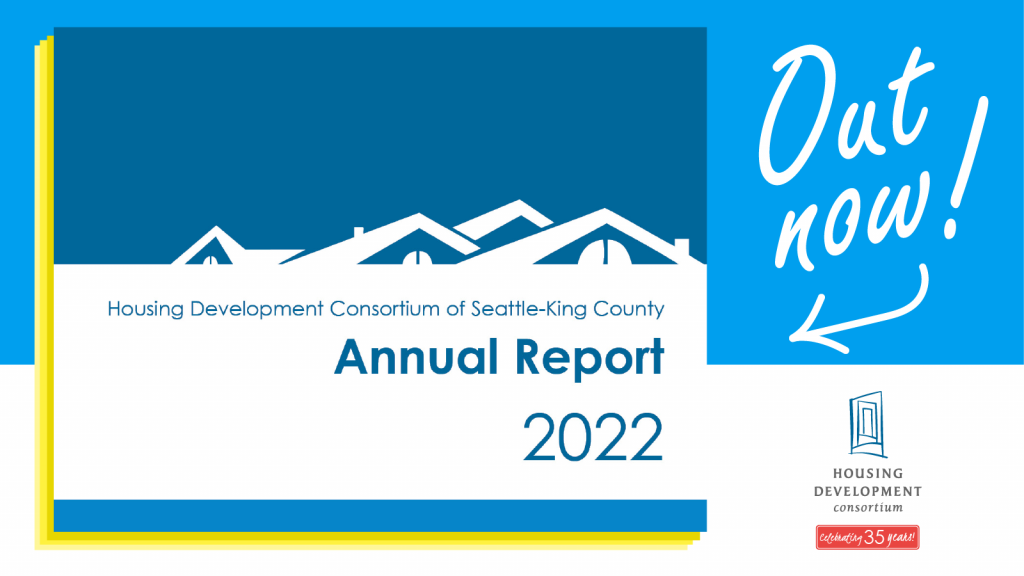Tiscareno is a mid-sized architecture firm with highly skilled and approachable professionals who create exceptional spaces where people want to work, live, and gather. Through a deep dedication to collaboration and affordability, Tiscareno produces beautiful, functional results that enrich communities for generations. Among their portfolio of work is a large mixed-use affordable housing project, Solera, developed by DevCo. Solera is a 590-unit project in Renton featuring 30,000 square feet of commercial space, an indoor basketball court, and work-from-home space.
Read MoreNews
HDC Member Highlight: Imagine Housing
Over the last 35 years, Imagine Housing has developed apartment communities across the Eastside, providing an affordable home and supportive services to over 1,400 people with low-and-moderate incomes. As the only Eastside-based non-profit provider of affordable housing, Imagine Housing’s vision is an Eastside with interconnected and welcoming communities where all people can live, learn, work and play.
Read More2024 Legislative Session Overview

Happy 2024, members, community stakeholders, and tireless affordable housing advocates!
The Housing Development Consortium is excited to announce the opening of the 2024 Washington State legislative session, on January 8, 2024. This 60-day short session is a valuable opportunity for transformative policy to create equitable, sustainable, and affordable housing.
Read MoreCelebrating and highlighting an extraordinary year

2023 was an exceptional year for HDC. We took the lead in spearheading a series of incredible victories for housing affordability and supportive services in King County, we played a pivotal role in addressing the legacy of housing discrimination, we laid the groundwork for this year’s round of comprehensive plan updates, and we continued our work in developing the future leadership of the sector.
Read MoreHonoring Frontline Staff, an Emerging Leader, and Board Service in 2023

At our 2023 Annual Member Meeting last week, we had the distinct honor of presenting our Frontline Staff Awards, Emerging Leader Award, and Board of Directors Award. These awards recognize individuals who have been outstanding champions of HDC’s mission and have made an important impact in the community and the affordable housing sector.
Read MoreA Historic Win – Renewal of the Seattle Housing Levy
Yesterday’s election delivered a major win for affordable housing in Seattle—the resounding passage of the 2023 Seattle Housing Levy renewal by over 66%. This not only demonstrates the community’s commitment to addressing the pressing issue of affordable housing but also signifies a significant step towards creating a more equitable and inclusive city.
The Seattle area has grappled with a severe affordable housing crisis for years, with rising rents and limited housing options affecting everyone but having the most dire impacts on our most vulnerable neighbors.
The passage of this expanded Housing Levy is a pivotal win for affordable housing. It showcases Seattle voters’ collective resolve to address the housing crisis and provides critical funding to expand and preserve affordable homes for those in need. The Housing Levy has been Seattle’s foundational tool for affordable housing for nearly 40 years, with past investments creating over 12,000 affordable homes across Seattle.
Read MoreSafer Building Materials in Affordable Housing
Guest Post by Megan Liu & Erika Schreder with Toxic Free Future
Toxic-Free Future and partners created a new tool called the Healthy Materials Matrix that makes it easier for affordable housing developers to avoid toxic chemicals and create healthier housing.
The Healthy Materials Matrix was created in partnership with the Housing Development Consortium, Healthy Building Network, Sundberg Kennedy Ly-Au Young Architects, and International Living Future Institute, so that project teams working on affordable housing have an actionable guide for selecting healthier building materials that are free of toxics.
While we may not realize it, the building materials used in our workplaces, schools, and homes can contain chemicals harmful to health. For example, toxic halogenated flame retardants can be found in insulation, formaldehyde is used in composite wood, and phthalates are found in sealants, flooring, windows, and doors. These are just a few examples of toxic building materials.
Everyone can be exposed to harmful chemicals in the indoor environment, but affordable housing deserves special attention. That’s because residents of affordable housing tend to have disproportionately high exposure to toxic chemicals in building materials and furnishings as well as from other sources. Safer materials do exist and we don’t need harmful chemicals in materials we use to build and furnish buildings.
With safer materials already in existence for most major building products, we saw an opportunity to create a new resource that can help affordable housing developers use safer materials and show policymakers that harmful chemicals in building materials can be regulated.
Read MoreOur 2022 Annual Report is out now!
2022 was truly a year of coming together and getting things done. In the face of a deepening affordable housing crisis, the 200+ members of HDC stepped up last year. It is our honor to share those accomplishments with you today in our 2022 Annual Report.
Throughout the pages of the report, you’ll find success stories from across the sector—from $440 million in new funding for affordable housing at the state level, to addressing systemic racial inequities through our work with the Black Home Initiative, to laying a foundation for the 2023 Seattle Housing Levy renewal, to celebrating the 300th graduate from our leadership development programs.

Every day, we do our work so that all of us—our neighbors, our families, and our communities—can come home. We know the need is urgent and the challenges are massive, and we know change is possible if we stand together, work together, and, most importantly, build together.
We hope you will enjoy reading our 2022 Annual Report. Thank you for your steadfast support and dedication to building our collective future: a region where all people can live with dignity in safe, healthy, and affordable homes.
Housing Internship Program Graduation
Last month, our HDC team had the honor of celebrating seven students as they complete the Housing Development Internship Program. This year’s graduation ceremony marks the completion of four program years of HDIP, a nine-month internship for students of color interested in careers in the affordable housing sector. Approximately 35 people, including host agency supervisors and community members, gathered at the 12th Avenue Arts Building on June 12 to congratulate the interns on their projects and successes.
Learn more about these seven future leaders below, and watch our new HDIP video to hear from three 2023 graduates about their experiences.
HDIP is now accepting applications for the 2023-24 program year—and this year, HDIP is expanding beyond affordable housing development to include focus tracks for architecture and construction management! You can also find more information and application materials by visiting our new HDIP landing page.
Read MoreAdvancing Affordable and Abundant Housing in Bellevue through Comprehensive Planning
Background
Bellevue’s Comprehensive Plan is a foundational policy document, laying the framework for land use and guiding growth and development over 20 years. The city significantly updates the Comprehensive Plan about every 10 years, and is in the process of drafting the 2024 update.
Relevant City Documents:
Eastside Affordable Housing Coalition Comment on the Bellevue Comprehensive Plan Update Draft Environmental Impact Statement
The Eastside Affordable Housing Coalition is committed to advancing housing affordability through Bellevue’s Comprehensive Plan update. We appreciate the work Bellevue has done to prepare the Draft Environmental Impact Statement (DEIS). We are writing to express our strong support for allowing an abundance of homes to be built, alongside expanded funding and robust inclusionary zoning policies to create new homes affordable for low-income families.
Bellevue faces a housing crisis. Home prices and rents in Bellevue have spiraled out of reach for so many people. This reflects Bellevue’s desirability as a city and a basic job-to-housing imbalance that forces workers to commute long distances into Bellevue. To sustain itself, Bellevue must build homes affordable to its essential workers–the teachers, nurses, firefighters, and restaurant workers that make the city’s economy and society function.
Bellevue has a window to make significant progress in advancing affordability and the opportunity to be a regional leader in addressing the housing crisis. This Comprehensive Plan Update is a major opportunity to create a more livable, equitable, and vibrant Bellevue.
Alternative 3, by allowing the highest amount of housing capacity alongside implementation of mandatory inclusionary zoning, goes the furthest to realize a vision of abundant, affordable housing throughout Bellevue. Allowing more housing to be built will help address Bellevue’s housing shortage and job-to-housing imbalance. Mandatory inclusionary zoning allows the public to capture some of the added value from upzoning and ensure we are directly creating homes affordable to low-income people.
Alternative 3 will also help create a better city for Bellevue residents, by creating complete neighborhoods with a mix of housing options, jobs, services, and multimodal transportation. It will expand walkable access to small businesses and retail, giving more people the choice to meet their daily needs without a car. It will support investments in frequent and convenient transit and safe and connected walking and biking routes. And it will help more Bellevue residents of all income levels and life stages find a place to call home in a city they love.
Detailed Policy Comments & Recommendations
Mandatory Inclusionary Zoning – In this Comprehensive Plan update, Bellevue has the opportunity to build many more homes, harness private development, and create broad-based and equitable growth. It can only maximize this potential and meet Bellevue’s substantial need for homes affordable to low-income people by pairing strong inclusionary zoning with ambitious housing growth. Furthermore, the preferred alternative should incorporate a commercial fee-in-lieu, to ensure new commercial and office development also contributes to the development of affordable homes.
Affordable Housing Need – Bellevue’s housing need allocation demonstrates the need to build many homes affordable to low-income people over the course of this Comprehensive Plan Update—over 29,000 affordable at less than 80% of Area Median Income (AMI), including 18,000 affordable at less than 30% AMI.[1] All of the alternatives should quantitatively analyze the impact of various growth strategies and housing production rates on the total homes affordable by area median income (AMI) band, with special attention paid to residents making less than 30% of AMI, 30-50% of AMI, and 50-80% of AMI.
Additionally, while inclusionary zoning is an important policy for scaling up the production of affordable housing in Bellevue, it will likely need to be complemented by other funding sources for affordable housing. The FEIS should analyze the gap between current available funding for affordable housing and the resources it would take to meet the need for affordable housing.
Midrise Housing – While any new housing requires subsidies to be affordable to low-income people, lower cost typologies like midrise apartments will reduce the subsidy required, and should therefore be maximized in the preferred growth strategy. According to the Department of Commerce’s draft guidance for jurisdictions to meet their allocated housing needs across the income spectrum, as is required under HB 1220, higher-cost cities can only demonstrate the ability to meet housing need allocations for low-income (0-80% AMI) housing with zoning that allows for midrise multifamily development.[2]
Alternative 3 goes the furthest to permit midrise, mixed-use apartments within walking distance of frequent transit service and neighborhood centers. We believe that the Future Land Use Map designations in areas currently zoned for multifamily and/or commercial use are broadly appropriate in Alternative 3, though we specifically recommend that the “R-High” land use designation be revised to incorporate midrises up to 8 stories, from the current 4-6 stories. This reflects the maximum height that can be feasibly developed using cost-effective wood-frame construction typologies. Revising the midrise height to 8 stories would better allow tree canopy to be preserved and enhanced, by reducing the footprint of new buildings.
However, comparing the Future Land Use Map of Alternative 3 to the Transit-Proximate Areas Map reveals that many transit-rich, high-opportunity locations currently zoned for single-family housing are not contemplated for land use changes to allow for midrise housing. The Future Land Use Map of Alternative 3 should be revised to align with the high-level policy intent and description of this alternative, by allowing for midrise housing within the full ¼ mile walkshed of frequent bus transit in all residential zones. Allowing midrise housing near transit in single-family zoned areas will advance environmental justice, as few, if any, of these areas are located within 500 feet of highways.
Light Rail & Transit-Proximate Areas – Light rail will transform transit mobility on the Eastside. A plan for the next 20 years of growth and development in Bellevue must holistically consider all of the light rail station areas. The Transit-Proximate Areas and commensurate housing density should expand as the transit service increases over time, and projections for future transit nodes should be incorporated into the FEIS alternative selected. To this end, the FEIS should map the ½ mile walkshed around each of the light rail stations in Bellevue. This analysis of light rail access should then inform the development of preferred alternative, which should allow midrise housing or greater in the ½ mile walkshed around each of the light rail stations.
Middle Housing – Alternative 3 would legalize a range of middle housing options, including duplexes, triplexes, and cottage housing, throughout the entirety of Bellevue. Allowing middle housing across the city is key to equitably distributing growth and creating more options for people. These options can create new affordable rental and homeownership options while still reflecting a residential character and allowing space for trees. To comply with HB 1110, the middle housing bill, the preferred alternative must go further than Alternative 3, to increase the range of middle housing options allowed throughout Bellevue to accommodate fourplexes citywide, and sixplexes when two of the homes are affordable or near transit.
Distinguishing Economic & Physical Displacement – It is important to clearly distinguish physical and economic displacement. Physical displacement is the result of direct demolition, while economic displacement occurs when residents and businesses cannot afford escalating rents or property taxes. The DEIS notes the likely directional effect of the alternatives on physical and economic displacement (“physical displacement may be lower in the No Action Alternative because of its lower overall capacity for housing growth. Economic displacement will be higher in the No Action Alternative given that it does not include additional strategies to increase affordability”). The FEIS should go beyond this qualitative directional assessment, to quantify the expected impacts of each of the alternatives on economic and physical displacement.
Economic displacement can far outpace physical displacement, as the price of existing housing is bid up in the context of a housing shortage. The City of Seattle analyzed rates of economic and physical displacement between 2010 and 2018, finding a net loss of over 24,000 rental homes affordable at less than 50% AMI—even after accounting for new affordable housing development—while physical displacement of low-income tenants due to demolition was measured at 5,264.[3]
As the DEIS notes, Alternative 3 has the greatest potential to reduce economic displacement relative to the other alternatives, by creating more housing overall and more affordable housing. This effect should be quantitatively estimated, to accurately compare overall residential displacement risks between the alternatives and develop appropriate anti-displacement strategies.
Surplus Land and Land Acquisition Strategies – Land costs are a major driver of the increasing cost of building affordable housing. Bellevue has made strides in recognizing the importance of leveraging underutilized land owned by public, religious, and non-profit entities through the C-1 Affordable Housing Density Bonus. As part of the FEIS, Bellevue should catalog the locations of such surplus or underutilized land across and designate these sites for midrise housing, especially in locations served by frequent transit or within walking distance of neighborhood centers.
Development Standards – Requirements for setbacks, upper-level stepbacks, modulation, and articulation increase development costs, reducing feasibility and the value that can be captured for affordable housing, in exchange for limited or subjective aesthetic benefits. Such development standards require more complex building envelopes, directly reducing energy efficiency and making innovative construction methods like cross-laminated timber or modular construction more difficult. Therefore, we recommend against advancing development standards such as setback, stepback, or building form requirements as mitigation measures for aesthetic impacts in the FEIS.
[1] King County Housing Needs Dashboard.
[2] Washington Department of Commerce, Draft Guidance for Land Capacity Analysis, p. 14, Exhibit 9. December 2022.
[3] City of Seattle, Displacement Risk Indicators.
Upcoming Engagement Timeline
| Date | Event | Links |
|---|---|---|
| July 24, 2023 (tentative) | City Council Review Preferred Alternative | City Council Calendar |
| June 28, 2023 | Planning Commission Choose a Preferred Alternative to be studied in the FEIS | Planning Commission Calendar |
| June 21, 2023 | Planning Commission Discuss a Preferred Alternative to be studied in the FEIS | Planning Commission Calendar |
| June 14, 2023 | Planning Commission Discuss analysis of alternatives in the DEIS and other analyses | Meeting Materials |
| May 10, 2023 | Planning Commission Discuss the alternatives in the DEIS | Meeting Materials |
| April 27 – June 12, 2023 | DEIS Public Comment Period | Comment on the DEIS DEIS Document & Information |



